Last updated 01/06/16
Classmates Who have Served us in the Military
Last updated
01/06/16
Those who have served us
deserve our greatest of appreciation.
This work has just begun and it will take some time to gather
information on all those wonderful men and women
who accepted the possibility of great risk for us.
![]()
Christian N. Seger, Lt.(j.g.) United States Navy Reserve, 1960-1964
Entered United States Navy
Officer Candidate School, Newport, Rhode Island; commissioned as Ensign, March
of 1961. Proceeded to Underwater Swimmers School, Key West for diving
training, which included the classic Mk V deep sea rig, conventional SCUBA, and
mixed gas SCUBA. Qualified as Second Class Navy Diver, rated to 315'.
Graduated first in class.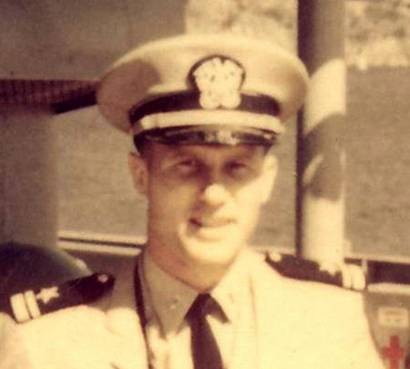
Following graduation from Underwater Swimmers School, proceeded to Explosive Ordnance Disposal School, Indian Head, Maryland for EOD training.
The Navy has responsibility for unexploded ordnance below the high water mark of the tide. During this course learned to render safe any known type of conventional, nuclear or biologic ordnance in the world. Paid special attention to nuclear and thermonuclear devices which were widely dispersed among Navy ships, submarines, and shore bases at that time.
Assigned to USS RAINIER (AE-5) home ported at U.S. Navy Weapons Station, Concord, California. Came aboard as EOD Officer and during the next two years made three cruises to the Western Pacific as Gunnery Officer and Special Weapons Officer. Qualified as Officer of the Deck and was the OOD for ship's Sea and Anchor detail. Being at sea for long periods was a remarkable experience.
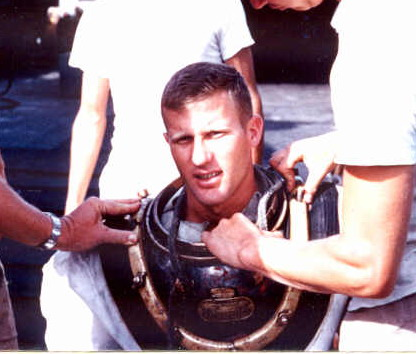 August
4, 1964 separated from the United States Navy at Subic Bay, the Philippines,
just as the Tonkin Gulf debacle was getting started. Left the ship about
eight hours before she sailed for Yankee Station, and thus missed being a
Vietnam Veteran by less than a day.
August
4, 1964 separated from the United States Navy at Subic Bay, the Philippines,
just as the Tonkin Gulf debacle was getting started. Left the ship about
eight hours before she sailed for Yankee Station, and thus missed being a
Vietnam Veteran by less than a day.
The United States Navy was one of the most formative and favorable experiences of my life. The Navy gave me a sense of responsibility and mission at an early age, and introduced me to crucial concepts of discipline, service, tradition, team work, and following the chain of command. Where else would a 22 year old American be responsible for conning a ship loaded with four thousand tons of high explosive into harbor at dawn. Or leading a division of enlisted men and petty officers in difficult and demanding duties while at sea and in port. San Francisco, San Diego, Hawaii, Guam, Okinawa, Japan, and Hong Kong were a few of the ports of call in near and distant lands-- I joined the Navy and saw the world. Would not trade those four years for anything.
![]()
Ernie Halley
![]()
Ray Gross
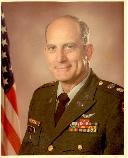
| Current Service Status Retired USA |
| Current/Last Rank Colonel |
| Current/Last Service Branch Chemical Corps |
| Current/Last Primary MOS 74A-Chemical, Biological, Radiological and Nuclear |
| Current/Last MOS Group Chemical (Officer) |
| Previously Held MOS |
| 7318-Organic Chemist |
| 7314-Chemical Staff Officer |
| 7315-Chemical Combat Service Support Officer |
| 51S-Research and Engineering |
| 47A-USMA Professor |
| 51A-Systems Development |
| Service Years 1963- 1992 |
| 1963-1964, Defense Language Institute (Presidio of Monterey ) |
| 1964-1964, Fort Meade , MD |
| 1964-1967, 7318, Edgewood Arsenal |
| 1969-1970, 7314, 3rd Brigade, 1st Infantry Division |
| 1970-1970, 7315, 1st Cavalry Division/HQ, 1st Cavalry Division |
| 1971-1971, 74A, Formal Schools/Chemical Officer Advanced Course |
| 1971-1972, 51S, Army Research Office |
| 1974-1975, 74A, US Army Corps of Engineers (USACE)/Chemical Demilitarization and Installation Restoration (PMCDIR) |
| 1975-1978, 47A, Formal Schools/United States Military Academy West Point |
| 1978-1979, 74A, Formal Schools/Command and General Staff College (CGSC) |
| 1979-1980, 74A, 45th Support Group |
| 1980-1983, 74A, Department of Defense (DOD)/Armed Forces Radiobiology Research Institute (AFRRI) |
| 1983-1985, 74A, US Army Criminal Investigation Command (USACIDC)/3rd Region CID |
| 1984-1986, 74A, Formal Schools/Army War College |
| 1985-1987, 51A, US Army Materiel Command ( AMC )/Chemical and Biological Defense Command |
| 1987-1989, 74A, US Army Europe (USAREUR)/V Corps |
| 1989-1991, 51A, US Army Materiel Command ( AMC )/Chemical and Biological Defense Command |
| 1991-1992, US Army Materiel Command ( AMC ) |
![]()
Donald E. Milsten
United States Naval Reserve: 1956-1966
Commissioned Ensign, USNR, June 8, 1960
Honorable Discharge, Lieutenant, October 21, 1966
· Four years NROTC, Cornell University
o 2 months summer training aboard U.S.S. Oriskany CV (aircraft carrier) 34, San Diego, CA.
· Active Duty:
o 1 month: Fleet Gunnery School in San Diego, CA
o 24 months: U.S.S. St. Paul CA (heavy cruiser) 73. Homeport: Yokosuka, Japan (entire time aboard in the Far East).
·
Most notable memories:
o Steaming at general quarters and condition 3 in the Taiwan Straits for month to deter Chinese forces during the Laotian “crisis.”
o Full dress salute and review by President Ngo Dinh Diem of Republic of Vietnam, Saigon, October 1960.
o Port calls in Honk Kong; Inchon, Korea, Port Swettenham and Kuala Lumpur, Federation of Malaya; Port Jessleton, British North Borneo; Keelung, Kaohsiung & Taipei, Taiwan; Subic Bay and Manila, Philippines; Okinawa; and numerous ports in Japan including Beppu, Iwakuni, Kobe, Port Otaru at Hokkaido, Nagasaki, Sasebo, Yokohama and, of course, lots of major and smaller cities inland throughout.
· Active reserve duty (Jackson, Michigan), October 1963 – August 1996
· Now a life member of the U.S.S. St. Paul Association
![]()
Ralph Holmes
Military Service History
Graduated from high school in
1956 along with my brilliant twin brother, Mark. He went to
In October 1957 after
discovering It was no longer A&M but State, my interest in higher learning
declined rapidly and I enlisted in the Army. Following basic training at
After satisfactorily
completing the six-month course I graduated in April 1959 as a Second
Lieutenant. (The Army didn’t have
Third Lieutenants.) My ‘Tac” or
Tactical Officer was First Lieutenant “Dutch” Passailiague, an immigrant
from German-occupied
Returning to
In 1964 I was transferred to
In July 1966 I reported back
to
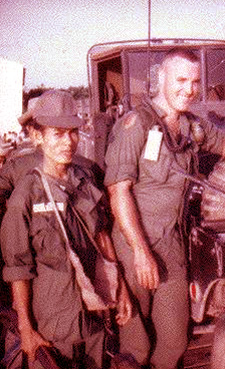 After a year of Benning, the
jungles of
After a year of Benning, the
jungles of
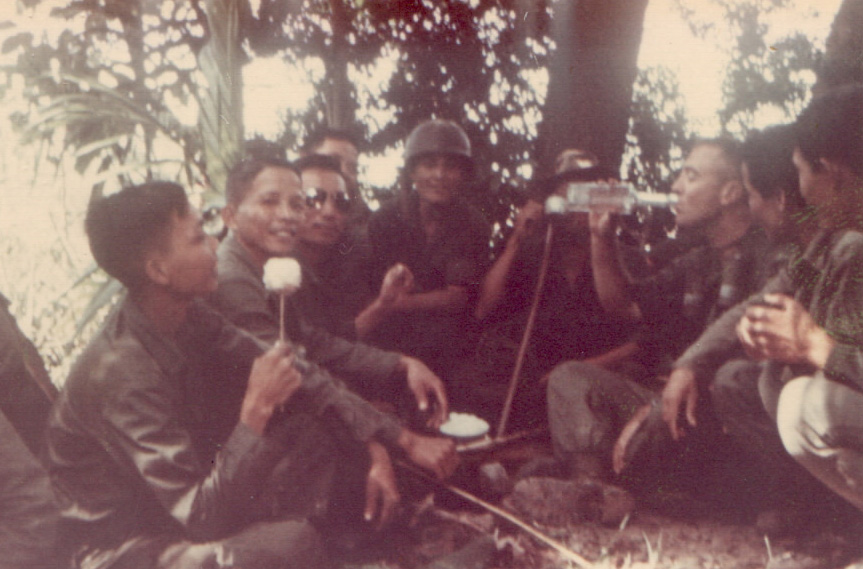
Our team was later relocated
to Phu Quoc island off the southwest coast, closer to
Tulsa
called again. So did the National Guard . . . . and once again I found myself
serving with Ed Wheeler as his XO. Family concerns took priority over monthly
weekend meetings and I resigned from the service in 1974.
Ed and I still ‘work’
together at the
![]()
Fred Benford
Fred Benford's Military and Semi Military Service
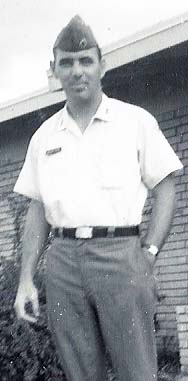 In January of 1962 I joined
the American Red Cross for Service at Military Installations,
In January of 1962 I joined
the American Red Cross for Service at Military Installations,
When I moved to
![]()
ED WHEELER: Buck Private to Brigadier General (USA-Ret)
To understand the foregoing line, you need some background.
As some of our classmates know, I was a member of the TCHS Rifle Team.
And, believe it or not we DID have both a rifle and pistol team. So … what does that have to do with a military career?.
In the civilized era of “Happy Days” in which we matured, we marksmen would bring our .22 CALIBER RIFLES AND PISTOLS TO SCHOOL every Wednesday. At 15, I rode to school on my bike; with a Remington 513TL beavertail rifle strapped across my back with mounted Olympic Redfield sights !! Upon arrival I secured it in my wall locker until that evening; when the team met in the Girl’s Gym and practiced shooting at targets mounted on bullet traps.
The only problem I had was that each team member had to buy his own ammo.
I made the sacrifice, but that didn’t leave me much to finance dates or entertain the first love of my life, Sally Sue Plumer. In any event, there were times when I had to scrimp the $1.00 it took to buy the two boxes of .22 Long Rifle Remington ammo, so that I could fire the required 100 rounds every Wednesday. Eventually, my Grandfather willed me his 1940 Packard and I began leaving my bike at home, but I still BROUGHT MY RIFLE TO SCHOOL EVERY WEDNESDAY for three years until we graduated.
Then an Oklahoma National Guard Staff Sergeant promised me that if I signed up in the Tulsa-based infantry battalion, he would guarantee me all the free ammunition I could shoot. The old armory on 15th Street even had a rifle range, and I could use it whenever I wanted to. When I brought up the issue at home, my mother almost had an elephant! My Dad who was a retired NYC Cop. a WW II veteran and a man of few words said to my distraught mother, “… He can handle it.!”
So the next day I raised my right hand and I became an official ‘Buck’ Private. I found myself wearing a bright red and yellow Thunderbird patch on my left sleeve; and the miniature crossed rifles of a newly-minted infantryman on the lapels of my ‘Ike’ jacket. (To be fair, the OKARNG kept its word. For as long as I was a Guardsman, I had all the free ammunition I could shoot.)
When we graduated, I won a one-year scholarship to Texas A&M and scored high enough to become a member of the Varsity Rifle Team, won a Varsity Letter as a “Fish” (Freshman), and became the Southwest Conference Individual Champion. The scholarship ran out and the next year I was left with two choices, become a roughneck in the Odessa oil fields or transfer from the USAR to the Army.
After five years as an enlisted man, I went to an OCS Class that began with 230 candidates at North Fort Hood, TX. Nine months later, I graduated with 22 others and we were commissioned 2d LTs of Infantry, which included our classmate Roger Brannon. In addition, over the next 3½ decades, I managed to graduate from almost every promotional school an infantryman could attend including the U.S. Army War College (Class of 83’). Within that period, thanks to Uncle Sam, I had also been to everything from tornado destroyed Oklahoma towns and the McAlester Prison Riot to more than two dozen foreign countries including Northern Ireland, Scotland, Paraguay, Uruguay, Germany, Korea, Saudi Arabia, Kuwait, etc. ad nauseum
During that time, I had the privilege and honor of serving with, or running across CHS classmates in uniform such as: COLONEL JOHN GETGOOD (ARMOR); COLONEL CLIFFORD CANTRELL (COMBAT ENGINEERS); CAPTAIN RALPH HOLMES (INFANTRY); 1ST LT ROGER STALLINGS (INFANTRY) and 2d LT ROGER BRANNON (INFANTRY). I feel confident there were dozens more who served our country, but the circumstances under which I met some of our classmates were truly amazing because they were totally unexpected.
I can’t imagine anyone either reading this far or who is interested in the details of what happened to cause me to end up where I did, so I will edit it out and conclude with this. On the 35th anniversary of my enlistment at the end of Desert Storm, I hung up my uniform and tacked up on my wall a certificate, signed by the Secretary of the Army. It acknowledged my retirement as a Brigadier General (U.S. Army).
![]()
Carl Washburn
A short summary of my military career is already provided in my bio which you have included in the Tom Tom section. Although I am very proud of my military career, I can’t provide much detail because most of my work was classified. As noted in my bio, I did have a few years of flight duty on board RC-135s shown in the attached pic. I did not fly or navigate that aircraft, Dotty. I was the commander of crewmembers who flew on it. I did wear a set of crewmember wings and flew several hundred hours very near target countries such as the former Soviet Union, North Korea, China, and Viet Nam. There was some risk of being shot down or crashing. Fortunately, none of that happened to me. I enjoyed my years as a sergeant when I used my Russian language. However, I most enjoyed the two tours as a commander after being commissioned. Most of the second lieutenants who worked for me have since made full colonel and retired. Kinda dates me, huh? Sorry I don’t have more photos, but most of them and my videos as well were stolen by one of our moving companies. Let me conclude by saying that my heroes are the guys and gals who were and are on the ground in harm’s way every day. Many have paid their dues in the form of losing their own lives, the lives of family members, jobs, marriages, etc., some of those are CHS grads. My compliments for including the Military section in the website. Maybe we’ll hear from some of the other ex-military folks as time goes by.
![]()
![]()
Ken Kastl
![]()
Allen Keenan
![]()
Jim Matthews
![]()
Bob Gorance
I actually started my military service as a cadet in the Civil Air Patrol while I was attending Roosevelt Junior High School. Some of you may recall seeing a few of us wearing our uniforms to school a time or two. The CAP is an auxiliary of the Air Force. Made it up to 2nd Lt. As a cadet, and was awarded the CAP certificate of Proficiency. This award is earned by passing about 4 days of testing on weather, radio procedures, aeronautical theory, and a bunch of other subjects. The test is pretty huge, and quite a challenge for us youngsters.
I enlisted in the USAF in January of 1961 after failing the eye test portion for the Aviation Cadet Program. I had passed the AFOQT, and the full battery of other tests easily. No flying for me, RATS! Went through basic at Lackland AFB in San Antonio, TX. Here is where I got lucky. I saw some strange machines and asked a sergeant what they were. I was told that they were to test for abilities in morse code. I split the scene as at that time I was copying a good 35 words per minute of morse and had taken typing at CHS. Color me gone! Also got ordered to take the language test and past it easily. I heard the three languages that I could be sent to learn, and graciously declined. I suppose I should have gone through that school and picked up additional college courses, but I had the smell of solder and burnt insulation in my blood and wanted to stay in electronics.
Due to an achievement award from the CAP, I enlisted at one pay grade above Airman Slick Sleeve. Who says money isn't a motivator? Right, a whole 15-20 bucks, or so per month more. We were at Lackland for six weeks and then got sent to Sheppard AFB in Wichita Falls, TX for 36 weeks of complex teletype message handling systems. During the last few weeks of that school, I was notified that I was being sent to Crypto school back at Lackland for 14 weeks TDY to train on "real" crypto gear. After that school was finished, I was sent to a communications site just outside Kaiserslautern, Germany called Siegelbach. This was one of only 10 major USAF communications centers worldwide.
As I walked in the door to the crypto shack for the first time, I noticed that the equipment wasn't what I trained for. We were told that a new crypto comm center was going to be built there. And it was. Our group had to do the install, set up and commissioning of a major crypto center with over 100 circuits. We did many twelve hour days hooking up all the comm wiring, 110vac electrical, etc. As I recall, we worked several months straight without a day off to complete the job. I was lucky enough to get in on the actual wiring of the signal lines as I had previous cabling and soldering experience through my years of ham radio and 5 years of equipment maintenance at KVOO Radio and TV in Tulsa. Our group built the entire facility starting at least 30 days behind schedule, and we finished 30 plus days ahead of schedule with a fully operational and error free comm center. We were also to install several additional types of crypto gear, and we received additional on-site schooling for those items. I think I spent more time in classrooms than I did operating and maintaining the equipment. Needless to say, security on our site was pretty tight, especially for us in crypto. This once "high speed comm center" is now a huge truck stop just off the Kaiserslautern NW exit of the Autobahn.
The tour in Germany was great, got to travel all over Europe, highlighting the whole adventure was spending a fantastic week at the 1964 Winter Olympics in Innsbruck, Austria. One of the great things of being stationed in Europe was the great museums where I got to see many of things I studied in history classes at school back home. It is quite a nice thing to be able to look directly at the Gutenberg Bible, and one of the actual printing presses he used. The other great experience was looking at the Magna Carta in the British Museum in London. I really miss those times.
I went in the USAF as an E-2, and was discharged in January of '65 as an Airman First Class – E-4 after a single 4 year tour. I returned to a lifelong career of sales and engineering in the radio broadcasting industry, which I still continue to do even though I retired. I'd go bonkers if I didn't stay busy.
Thanks to everyone who served. Best regards,
Bob Gorjance
![]()
Haven Caldwell
![]()
Jim Caldwell
![]()
Cliff Cantrell
![]()
Wilis Clark
![]()
John Getgood
![]()
Tom Hawthorn
![]()
Paul Henderson
![]()
Mark Holmes
Lieutenant Commander, USN, 638787. That's OUR Navy, BTW!
We're the ones who put the Army ashore (as at Saipan - before my time) and then
send in our Marines to save the situation.
![]()
Dale Osborn
He was a Navy Jet Carrier Fighter Pilot and flew in Viet Nam.
![]()
Charles R. Wisher –
I joined the Navy in 1956,
left for boot camp in
I served on the USS Bryce
Canyon (AD-36), the U.S.S. Providence “CLG-6” Light Guided Missile Cruiser.
It was the Flag Ship of the Seventh Fleet, stationed in
I volunteered for underwater
Ports of interest while in
the Navy were Long Beach, San Diego, San Francisco, Seattle, Hawaii, Hong Kong,
Guam, Subic Bay, and Manila, Philippines, Koahsiung, Formosa, Okinawa, Kobe,
Sasebo, Yokohama, Nagasaki, Tokyo, Yokosuka, Kyoto, Iwakuni, Hiroshima, Japan,
Seoul, Inchon, Korea, Saigon, Singapore, Kuala Lumpur, Malaysia.
I joined the Navy to see the
world, and that I did. I experienced
eleven years of fun and excitement. It
was eleven years well spent, and I enjoyed them all.
![]()
Roger Brannon
2LT Roger O. Brannon Enlisted OKARNG, OCS - graduate 1960;
Infantry Platoon Leader, 45th Infantry Division.
![]()